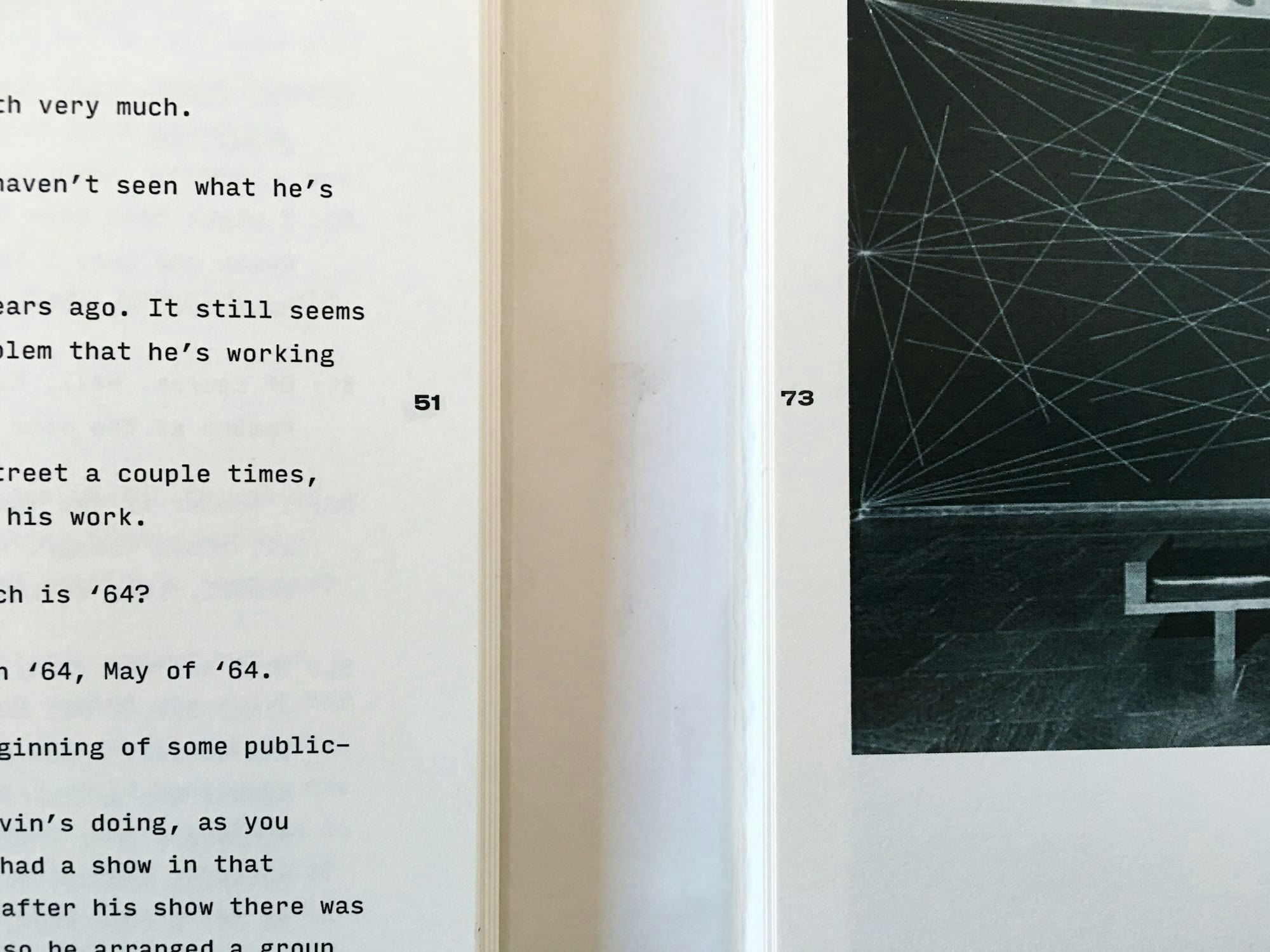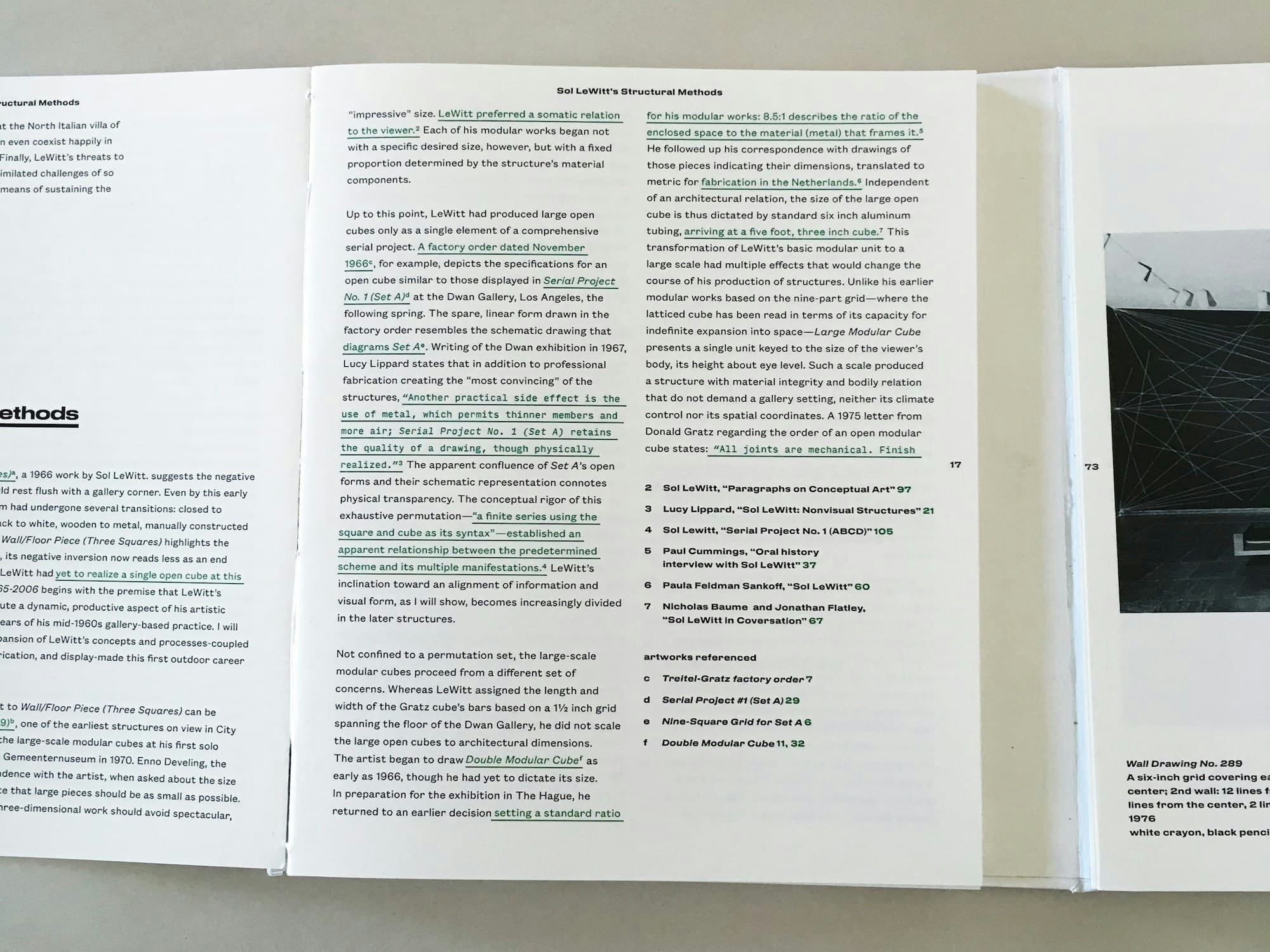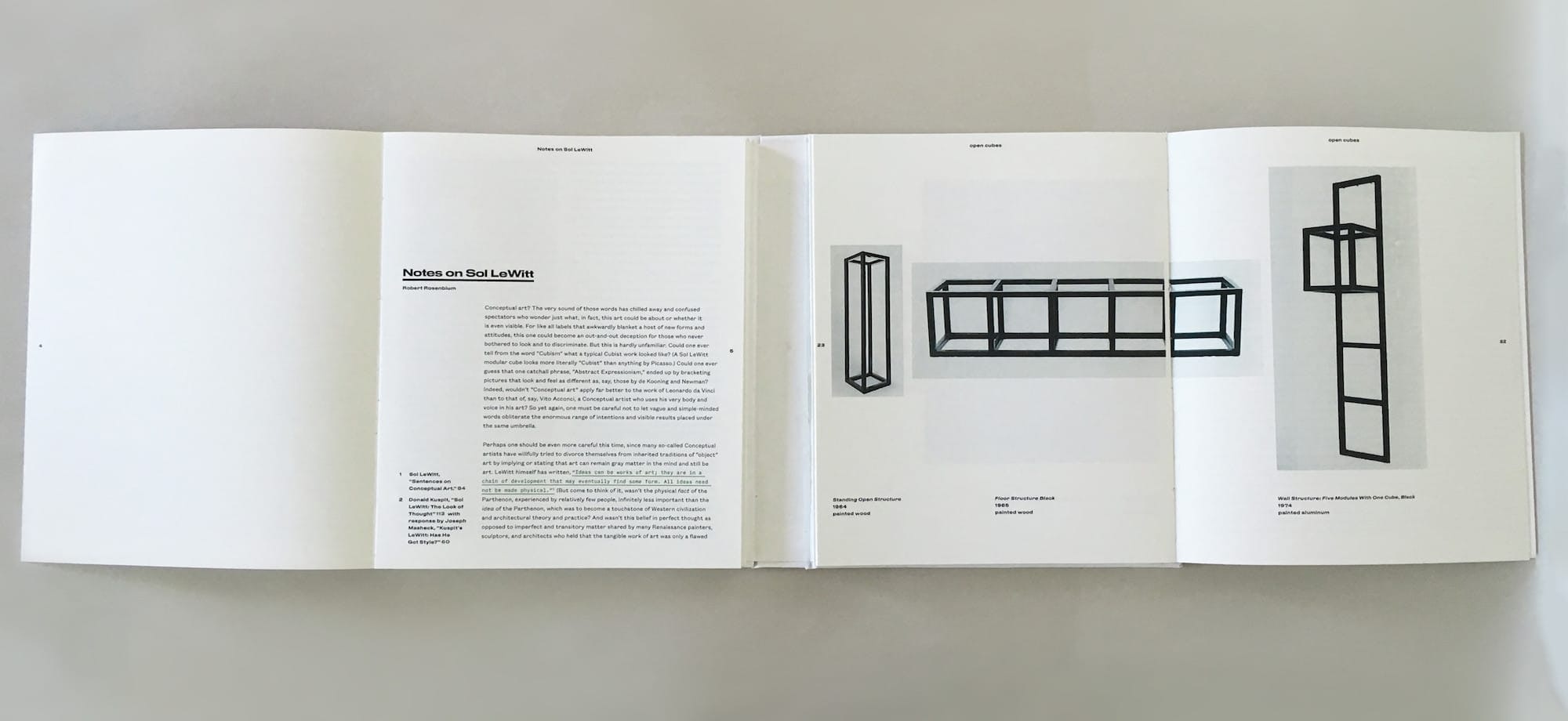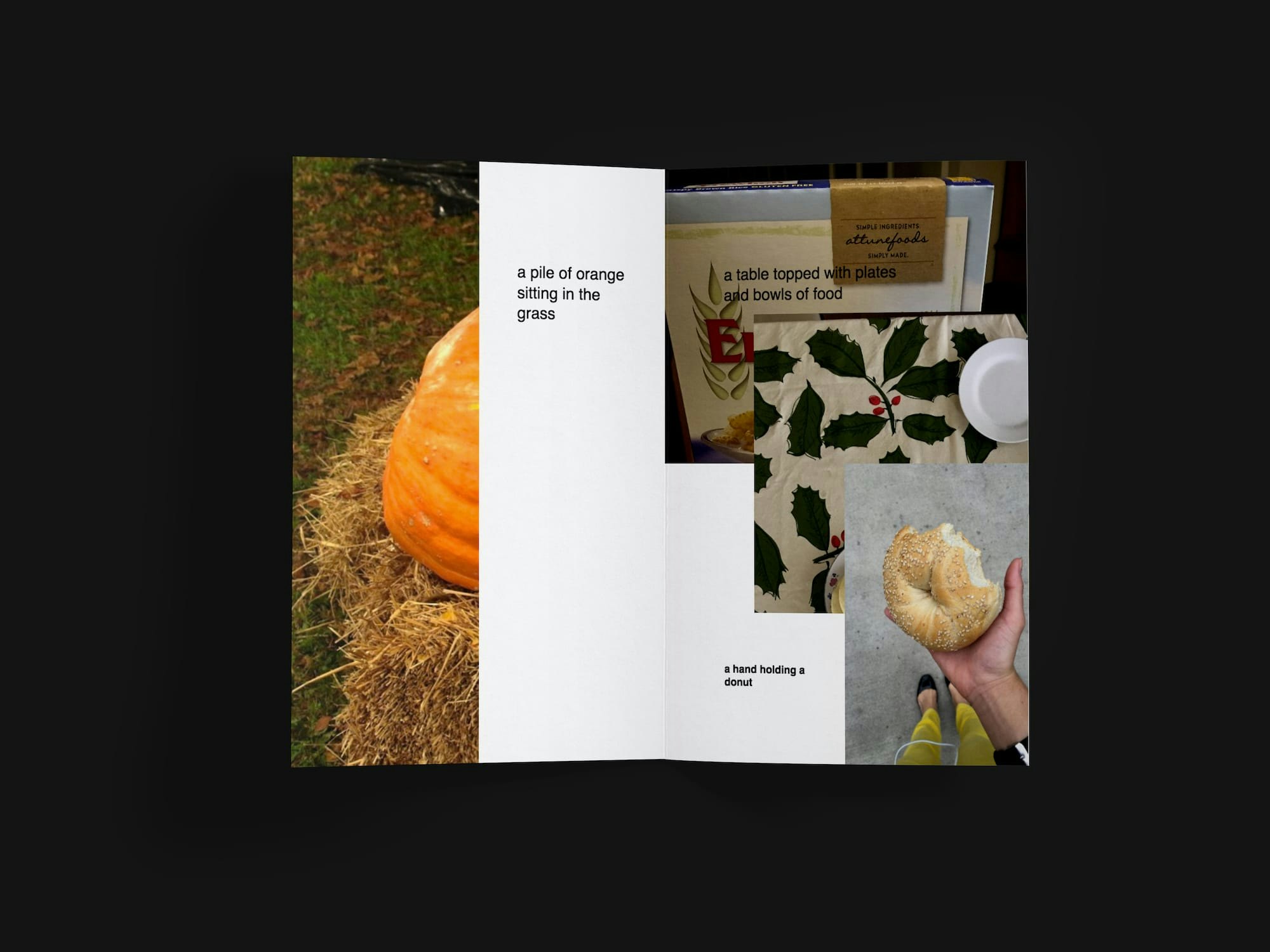A book-as-exhibition of Sol LeWitt’s work.
- Production,
- Publication Design,
- Research
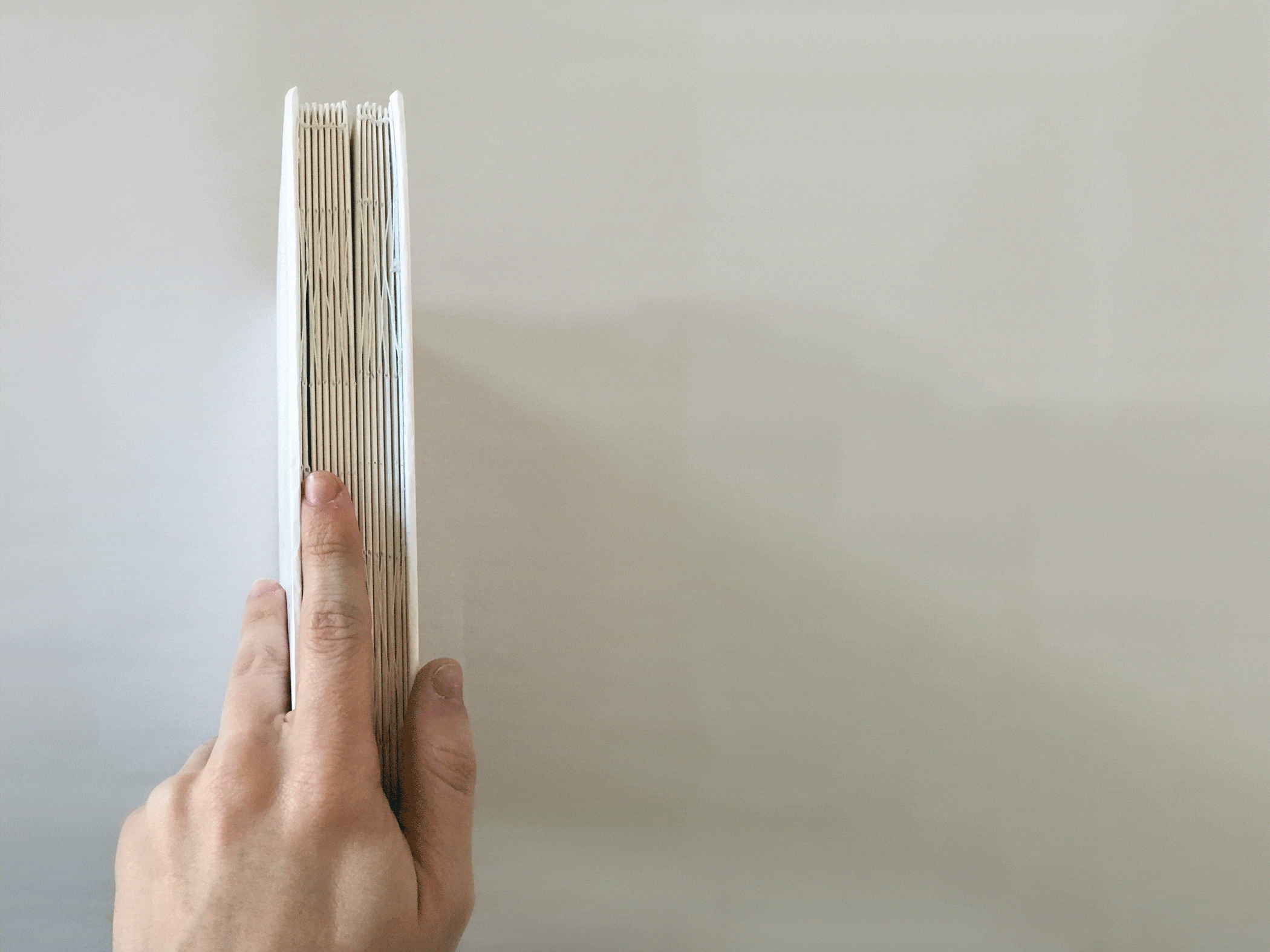
A book is a prime example of a serial narrative structure because you are turning the pages, but you can go to any page at any time.
— Sol LeWitt
Traditionally, an exhibition catalogue plays the role of indexing the event, providing additional context, information, writing, etc. Instead, we wanted to explore what it would mean for an exhibition catalogue to only be self-referential. It is often said that when art is reproduced in print or on screen, it cannot replicate the same experiential qualities seen in person. we want to consider what new affordances are available when art is reproduced in a printed exhibition.
We wanted to provide a structure to the book that wasn’t linear or chronological—something that engaged with the experiential nature of physical exhibitions or websites. By creating a book that has qualities of a network, the reader can determine their own path—as in a reference book—rather than a predetermined “correct” path.
The left half of the book includes essays on LeWitt and his work, writing by LeWitt, interviews, and other fragments and scans of writing. The right half of the book includes images of LeWitt’s work. Footnotes are provides across the halves of the book when specific works or writings are referenced.
